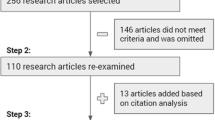Abstract
Data Fabric technology is analyzed in relation to traditional data management methods. It is shown that traditional methods of data collection and storage do not provide the speed necessary in the digital economy. Accordingly, conversion from data to knowledge is proposed, with corresponding modification of the paradigm for working with corporate information. By this means, data enriched with semantics by means of knowledge graphs become available for automatic analysis. That may be regarded as the first step toward smart information systems based on IT Architectures and Data Fabric. Formal description of the classes of real-world entities is proposed, with a corresponding hierarchy and constraints, including rules of logical inference, according to the most relevant real-time information. Data Fabric platforms are analyzed. A physical model of data fragmentation and data structuring is considered, with the creation of virtual access levels where data are logically combined. This approach permits central data management in the classical sense; the IT architectures present data in accordance with corporate standards.




Similar content being viewed by others
REFERENCES
Kuftinova, N.G., The problem of data mining in modelling traffic flows in a megapolis, Mir Transp., 2020, vol. 18, no. 5, pp. 24–40.
Kuftinova, N.G., Managing of the city transport system based on the integration of analytical systems, Materialy XIV Natsional’noi nauchno-prakticheskoi konferentsii s mezhdunarodnym uchastiem “Organizatsiya i bezopasnost’ dorozhnogo dvizheniya” (Proc. 14th Nat. Sci. and Pract. Conf. with Int. Particip. “Traffic Safety and Management”), Tyumen: Ind. Univ. Tyumen, 2021, pp. 320–324.
Kuftinova, N.G., Maksimychev, O.I., Ostroukha, A.V., et al., Data fabric as an effective method of data management in traffic and road system, Proc. “Systems of Signals Generating and Processing in the Field of on Board Communications IEEE,” Conf. Record #53456, Moscow, 2022. ISBN 978-1-6654-0635-2. Online ISSN 2768-0118.
Kuftinova, N.G., Ostroukh, A.V., Karelina, M.Yu., et al., Hybrid smart systems for big data analysis, Russ. Eng. Res., 2021, vol. 41, no. 6, pp. 536–538. https://doi.org/10.3103/S1068798X21060137
Nasir, Q., Qasse, I.A., Talib, M.A., and Nassif, A.B., Performance analysis of Hyperledger Fabric platforms, Secur. Commun. Networks, 2018, vol. 11, p. 14. https://doi.org/10.1155/2018/3976093
Kim, J., Lee, K., et al., QiOi: Performance isolation for Hyperledger Fabric, Appl. Sci., 2021, vol. 9, p. 3870. https://doi.org/10.3390/app11093870
Wang, S., On private data collection of Hyperledger Fabric, Proc. IEEE 41st Int. Conf. on Distributed Computing Systems (ICDCS), 2021, pp. 819–829. https://doi.org/10.1109/ICDCS51616.2021.00083
Loke, G., Computing fabrics, Matter, 2020, vol. 2, no. 4, pp. 786–788. https://doi.org/10.1016/j.matt.2020.02.017
Gupta, H., Hans, S., Aggarwal, K., et al., Efficiently processing temporal queries on Hyperledger Fabric, Proc. IEEE 34th Int. Conf. on Data Engineering (ICDE), 2018, pp. 1489–1494. https://doi.org/10.1109/ICDE.2018.00167
Thakkar, P., Nathan, S., and Viswanathan, B., Performance benchmarking and optimizing Hyperledger Fabric blockchain platform, Proc. IEEE 26th Int. Symp. Modeling, Analysis, and Simulation of Computer and Telecommunication Systems (MASCOTS) (Milwaukee, WI, USA, September 25–28, 2018), New York: IEEE, 2018, pp. 264–276.
Androulaki, E., Barger, A., Bortnikov, V., et al., Hyperledger Fabric: A distributed operating system for permissioned blockchains, Proc. 13th EuroSys Conf. (Porto, Portugal, April 23–26, 2018), 2018, pp. 1–15.
Silva, M., Ryu, K.D., and Da Silva, D., VM performance isolation to support QoS in cloud, Proc. IEEE 26th Int. Parallel and Distributed Processing Symp. Workshops & PhD Forum (Shanghai, China, May 21–25, 2012), New York: IEEE, 2012, pp. 1144–1151.
Javaid, H., Hu, C., and Brebner, G., Optimizing validation phase of Hyperledger Fabric, Proc. IEEE 27th Int. Symp. on Modeling, Analysis, and Simulation of Computer and Telecommunication Systems (MASCOTS) (Rennes, France, October 22–25, 2019), New York: IEEE, 2019, pp. 269–275.
Kwon, M. and Yu, H., Performance improvement of ordering and endorsement phase in Hyperledger Fabric, Proc. 6th Int. Conf. on Internet of Things: Systems, Management and Security (IOTSMS) (Granada, Spain, October 22–25, 2019), New York: IEEE, 2019, pp. 428–432.
Gorenflo, C., Lee, S., Golab, L., and Keshav, S., FastFabric: Scaling hyperledger fabric to 20000 transactions per second, Int. J. Network Manage., 2020, vol. 30, no. 5, p. e2099. https://doi.org/10.1002/nem.2099
Zhou, X., Liang, W., Kevin, I., et al., Academic influence aware and multidimensional network analysis for research collaboration navigation based on scholarly big data, IEEE Trans. Emerging Top. Comput., 2021, vol. 9, no. 1, pp. 246–257.
Author information
Authors and Affiliations
Corresponding author
Additional information
Translated by B. Gilbert
About this article
Cite this article
Kuftinova, N.G., Ostroukh, A.V., Filippova, N.A. et al. Integration of Scalable IT Architectures on the Basis of Data Fabric Technology. Russ. Engin. Res. 42, 1199–1202 (2022). https://doi.org/10.3103/S1068798X22110144
Received:
Revised:
Accepted:
Published:
Issue Date:
DOI: https://doi.org/10.3103/S1068798X22110144




